Tube Bending Conforms to Electric Vehicles
The rise of electric mobility represents a fundamental shift for automotive manufacturers to address -- and the effects of this are being felt in the tube bending industry. Lightweight construction, customized machine configuration and automation are the key trends according to tube bending machine manufacturer Schwarze-Robitec.
Germany's Federal Motor Transport Authority (KBA) reports an increase of new electric vehicles (EVs) -- particularly when looking at passenger cars. In that segment, the EV share in all newly registered passenger cars was 6.7% for the entire year 2020. This share has substantially risen to over 25% when looking at the period of January to November 2021. The effects of this shift are being felt not just by the automotive manufacturers themselves but across the entire supply chain.
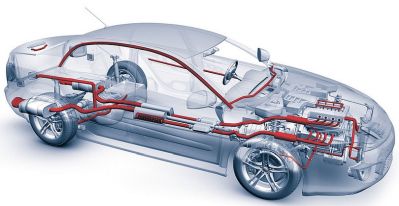
Designers of electric vehicles are developing components which are overall more compact, lighter in weight and at the same time heavy duty. Intelligent machines capable of bending these special material parts accurately and economically are required to meet these needs.
Lightweight construction is a major theme here, since the lighter the vehicle, the less energy it needs. And this increases the range, crucial for EVs. It also leads to a change in requirements for tube bending, with a growing need for compact yet high-performance components, such as thin-walled tubes made out of high-strength materials.
But lightweight materials such as aluminum and are usually more expensive and more challenging to process than conventional steel. German-based tube bending machine manufacturer Schwarze-Robitec is also witnessing a substantial increase in orders that go beyond the bending of typical round tubes. Instead, lightweight construction increasingly requires complex, asymmetrical shapes with diverse cross sections.
Traditional automotive manufacturing usually involves round tubes being bent and then turned into the desired profile shape through hydroforming. This subsequent bending process is often not possible when working with lightweight materials.
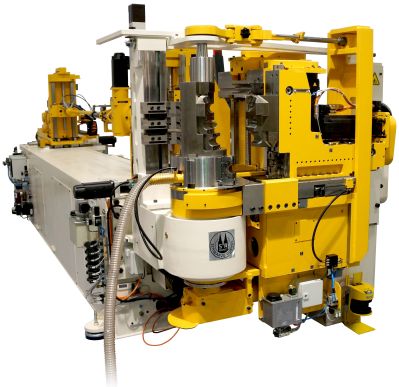
The tube bending machines from Schwarze-Robitec, such as the powerful allrounder CNC 80 E TB MR, enable short cycle times and high resource efficiency -- which are indispensable for users in the automotive industry to stay competitive.
Aluminum, for example, is a material that hardens in the air. This means that a pre-fabricated aluminum profile can no longer be bent after just a few months. Furthermore, if the desired cross section is not round, it is much harder to adhere to the predefined tolerances, especially when using aluminum. An additional difficulty posed by lightweight materials concerns conductors, with aluminum profiles and rods increasingly replacing traditional copper cables in cars. The layers of insulation cannot be damaged during bending.
Shift Towards Flexible Configuration of Tube Bending Machines
With the shift towards electric mobility, the traditional standard tube bending machine with predefined performance parameters is increasingly giving way to product-specific special machines that can be customized according to client needs. Bending performance, geometric measurements such as bending radius and tube length, tool installation space and software can increasingly be aligned with client and product requirements.

Bert Zorn, Managing Director of Schwarze-Robitec
This shift is already ongoing but will intensify, predicts Schwarze-Robitec Managing Director Bert Zorn. "To be able to realize these sorts of projects, systems suppliers need to not only have the necessary expertise in bending technology but also the requisite knowledge and experience in tool and process design," Zorn explains. "This is the case from the design stage right up to the start of series production and production support."
Complex tool shapes are needed to produce aluminum profiles with different types of cross sections, for instance. The development and correct design of such tools thus becomes increasingly important.
Focus on Efficiency and Short Cycle Times
Conventional combustion engines still account for the lion's share of automotive production, however, and therefore remain of huge importance for manufacturers of tube bending machines.
The growing cost pressure sweeping across the automotive industry is also being felt throughout the entire supply chain. Short cycle times, maximum speed and a high degree of precision are the order of the day. Companies aiming to remain competitive need to use resources efficiently. This not only includes time and material resources, but also human resources, the individual employee who plays a central role in the manufacturing industry. In this field, user-friendly and reliable processes are a key factor in boosting cost-effectiveness.
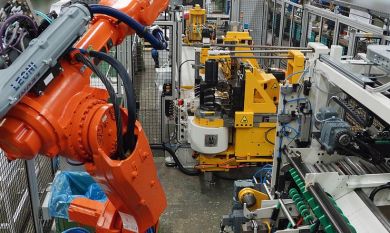
All of Schwarze-Robitec's CNC machines can be expanded to a fully automated bending cell.
Manufacturers of tube bending machines need to respond to the challenges of their target industries by supplying high-performance machines that are tailored precisely to their customers' needs. To achieve this, Schwarze-Robitec is relying on multilevel technology. Used in combination with customizable multi-radius bending tools, this technology facilitates simple and precise bending with only short lengths of tube between individual bends.
The effect of this is most clear when different radii, bend-in-bend systems or complex tube systems are being manufactured, as even a few seconds saved per component can have a huge positive impact on production efficiency.
Another key aspect when it comes to tube bending efficiency is the interaction between operator and machine. The technology has to support users wherever it can.
For example, the integration of bend former retraction -- with bend former and swing arm operated separately -- as standard enables users of Schwarze-Robitec machines to adjust and position a wide range of tube geometries during the bending process without any problems at all.
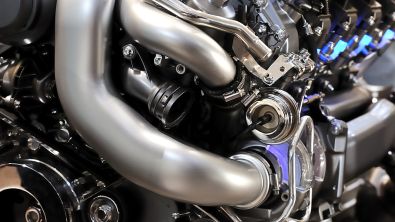
Lightweight materials such as aluminum are usually more expensive and more challenging to process than conventional steel.
The most significant benefit, however, may come from Schwarze-Robitec's NxG control system, which continuously and fully automatically monitors the interaction of axes and optimally coordinates their movement. While one bend is still in progress, the axes are already being prepared for the next steps. The Cologne-based manufacturer's solution therefore reduces production times by 20 to 40% depending on the component and the desired tube geometry.
Automation and Integration of Processes Beyond Bending
In view of the shift toward alternative powertrains, the frequently used buzzword "automation" is more relevant than ever.
Manufacturers of tube bending machines need to focus on extensive automation and increasingly integrate work processes that go beyond bending. This is not just the case for tube bending processes in large-scale series production, but also increasingly for very low volume series production.
In (fully) automated tube processing, the various stages of the process are reliable, error-free, repeatable and fast, ensuring that bending results are consistently of the same quality. Upstream and downstream processing steps are also integrated into the fully automated bending cell -- from cleaning, assembly and end-forming to tube measurement.
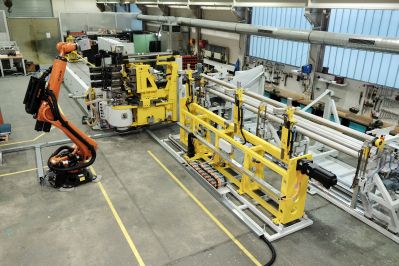
In the fully automated tube bending cell, all work steps including upstream and downstream processes, run safely error-free, repeatably, and quickly.
Handling devices such as robots and additional systems for tube feeding and unloading are integrated, too. The primary task is to precisely analyze which processes are the perfect fit for the application in question. For example, depending on a customer's requirements, a belt-loading magazine, chain magazine, lifting conveyor or a loose material conveyor might be the right system for the tube feeder. The optimal component must be determined for each individual process.
All of these components can then be put together to form a complete system that optimally meets requirements. This system, along with all process steps, is then controlled centrally via the NxG control system in combination with the master computer system.
Even though each additional process step makes the process chain longer, the user does not have to experience any delays as cycle times generally remain the same. The increased complexity of such an automated system means there are greater requirements in terms of control and the integration of bending cells into existing production chains and company networks. That is why it is also important that tube bending machines are already implementing existing and future industry 4.0 technologies.
Some Things Stay the Same Even in a Time of Change
Schwarze-Robitec Managing Director Bert Zorn summarizes the situation as follows: "Companies that act flexibly by tailoring their machines to special customer requirements can now successfully leverage this strength, as the shift towards electric motors in the automotive industry is driving a change in parameters. Suppliers such as manufacturers of tube bending machines need to be able to respond with flexibility and speed and devise new production methods."
However, even when major shifts are under way, some things remain as important as ever -- a highly qualified service operation that is constantly available and a swift supply of spare parts, as well as expertise, experience and the ability to fully realize projects around the globe.
Want more information? Click below.
Rate this article
View our terms of use and privacy policy ::m::